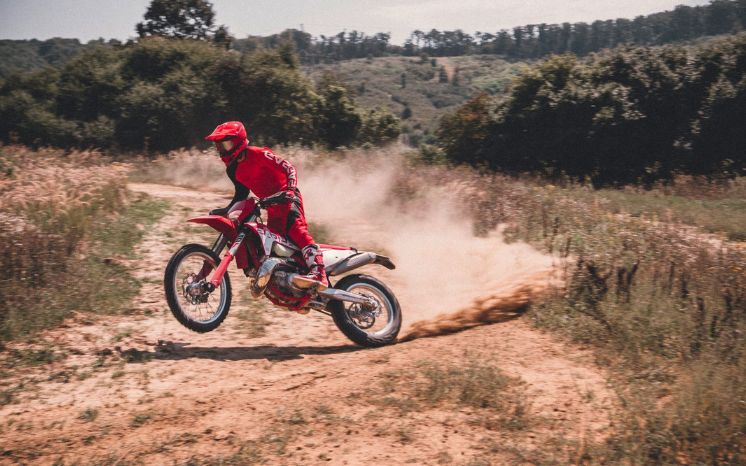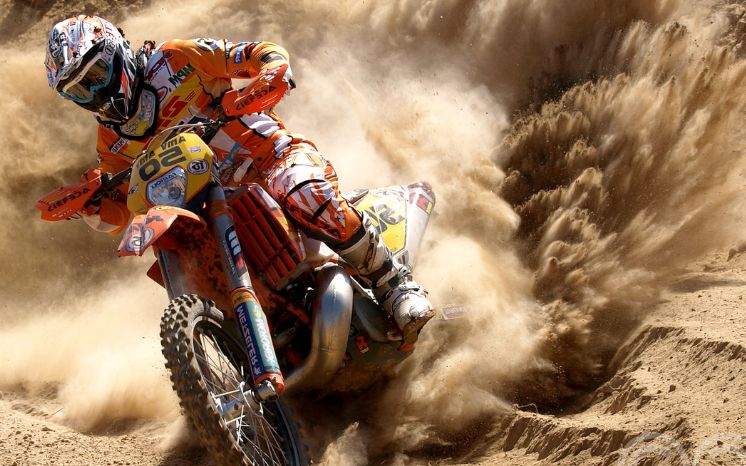Enduro motorcycles have a rich, dynamic history that spans across continents and decades. These versatile machines, designed to endure the most challenging terrains, have evolved significantly since their inception.
The history of the Enduro motorcycle is a tale of innovation, endurance, and the relentless pursuit of adventure. It is a story intricately woven into the fabric of motorcycle culture, highlighting the tenacity of both machines and their riders.
In this exploration, we delve into the captivating journey of Enduro motorcycles. From their early beginnings to the high-tech marvels they’ve become today, the Enduro motorcycle’s narrative is one of constant evolution and adaptability.
History Of The Enduro Motorcycle
The roots of Enduro motorcycles can be traced back to the early 1900s when motorcycle manufacturers started experimenting with their machines’ capabilities. In particular, British and European manufacturers began developing lighter, more agile motorcycles that could handle off-road terrain.
However, it wasn’t until the 1920s when the first official Enduro race took place in Camberley, England. The event, known as the Scottish Six Days Trial (SSDT), was a grueling race that tested both rider and machine for six consecutive days on rough terrain.
The SSDT quickly gained popularity and became an annual event, attracting riders from all over the world. As the race grew in notoriety, so did the demand for motorcycles capable of enduring such challenging conditions.
In the 1930s, manufacturers like BMW and Harley-Davidson began producing dedicated Enduro motorcycles, equipped with features such as knobby tires, higher ground clearance, and improved suspension systems. These advancements allowed riders to conquer more challenging terrains with greater ease.
However, it wasn’t until the 1960s that Enduro motorcycles truly came into their own. The introduction of lightweight, two-stroke engines and advancements in suspension technology revolutionized the sport.
The first modern Enduro motorcycle, the Yamaha DT-1, was introduced in 1968 and quickly became a game-changer for the industry. Its powerful engine and nimble handling made it a favorite among riders, inspiring other manufacturers to follow suit.
In the following decades, Enduro motorcycles continued to evolve with advancements in technology and engineering. In the 1970s, Honda introduced its iconic XR series, followed by Suzuki’s DR series in the 1980s.
The 1990s saw an influx of European manufacturers entering the Enduro market, such as KTM and Husqvarna, bringing their own unique designs and innovations to the table.
Today, Enduro motorcycles are more advanced than ever before, with features such as fuel injection systems, electric start engines, and sophisticated suspension setups. These high-tech machines continue to push the boundaries of what’s possible in off-road riding and inspire a new generation of riders to take on the ultimate endurance challenge.
In conclusion, the history of the Enduro motorcycle is one of continuous evolution and adaptation. From its humble beginnings in the early 1900s to the high-tech marvels of today, Enduro motorcycles have captivated riders with their enduring spirit and ability to conquer any terrain. As we look towards the future, it’s exciting to imagine what new developments will shape the next chapter in this ever-evolving history.
See more: What To Wear When Riding A Motorcycle
Things You Didn’t Know About Enduro Motorcycles

While Enduro motorcycles may seem like a familiar sight to many, there are some lesser-known facts about these machines that might surprise you. Here are some interesting tidbits about Enduro motorcycles that showcase their unique history and development:
- The term “Enduro” was first coined in 1907 by the Scottish Six Days Trial organizers, who used it to describe the grueling nature of the race.
- The first Enduro motorcycles were often just modified road bikes, with riders adding off-road tires and other modifications to make them more suitable for off-road riding.
- In 1976, American racer Jack Penton won the International Six Days Trial on a prototype Husqvarna motorcycle equipped with a mono-shock rear suspension system, paving the way for modern suspension technology in Enduro bikes.
- The longest-running annual Enduro race is the International Six Days Trial, which has been held every year since 1913 (with a break during World War II).
- KTM is currently the most successful manufacturer in Enduro racing, having won multiple world championships and off-road events with their high-performance bikes.
Whether you’re a die-hard fan of Enduro motorcycles or just starting to discover their history, these fun facts offer a glimpse into the exciting world of off-road riding. As the popularity of Enduro continues to grow, it’s safe to say that this incredible sport and its machines will continue to make history for years to come.
FAQs
Enduro motorcycles, with their robust features and storied history, often elicit numerous queries from motorcycle enthusiasts and casual observers alike. These questions range from the technical aspects of these machines to their role and influence in the world of motorsport.
How do Enduro motorcycles differ from other off-road bikes?
Enduro motorcycles are engineered specifically for endurance racing, which involves long distances across challenging terrains. They are designed to withstand the strain of prolonged, intense use and have features that cater to the demands of both on and off-road conditions.
Unlike other off-road bikes, Enduro motorcycles are road legal. They come equipped with features such as headlights, tail lights, and mirrors, making them versatile for both off-road trails and city streets.
What are the key factors to consider when choosing an Enduro motorcycle?
When choosing an Enduro motorcycle, multiple factors come into play. The motorcycle’s weight, suspension, and power are all crucial considerations. For example, a lighter motorcycle can be easier to maneuver in off-road conditions.
The suspension should have enough travel to absorb shocks and bumps, while the power should be suitable for your skill level and the type of riding you plan to do. It’s also important to consider the motorcycle’s maintenance needs and how easy it is to access parts and service.
How has the design of Enduro motorcycles changed over the years?
The design of Enduro motorcycles has evolved significantly over the years. In the early days, these motorcycles were essentially modified street bikes. However, as the sport grew in popularity, manufacturers began to design motorcycles specifically for endurance racing.
This led to innovations such as lighter frames, advanced suspension systems, and more powerful engines. Today, technology continues to drive the evolution of Enduro motorcycles, with features like fuel injection and electric start engines becoming standard.
What is the future of Enduro motorcycles?
The future of Enduro motorcycles is likely to be driven by advancements in technology and a growing interest in off-road riding. We might see innovations in areas like electric power, as manufacturers seek to reduce environmental footprints.
Advances in suspension and braking systems could enhance performance, while new materials might further reduce weight and improve durability. As the sport of Enduro racing continues to grow, the motorcycles used in this discipline are likely to progress in tandem, pushing the boundaries of what’s possible in off-road riding.
Final Thought
Enduro motorcycles have a rich history, marked by continuous innovation and growth. This story is far from over, as manufacturers and riders alike continue to push boundaries, seeking new ways to master the terrain and extend the limits of endurance.
The heart of Enduro isn’t just in the technology of the bikes, but in the enduring spirit of the riders. The community that has been built around this discipline is as diverse and formidable as the landscapes they traverse.
The future of the Enduro motorcycle seems bright. With advancements in technology and an ever-growing interest in the sport, the next chapter of this exciting history is being written right now. We can only wait in anticipation to see what it holds.
As we celebrate the past and look forward to the future, let’s remember the essence of Enduro: the thrill of the ride, the unity of the community, and the unwavering resilience in the face of any challenge. May the history of the Enduro motorcycle inspire us all.
